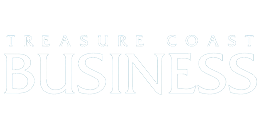Manufacturers need to be vigilant about safety, financial stability and meeting new product demands

Kevin Staten is a senior vice president and relationship manager for the Treasure Coast market in Commercial Banking at Bank of America Merrill Lynch. In this capacity, his responsibilities include leading a team of specialists focused on understanding each client’s unique needs to deliver strategic financial guidance and solutions. Staten’s mission is to help local companies thrive by achieving their business goals, no matter how simple or how complex. He has 25 years of finance and banking, joining Bank of America Merrill Lynch in 1996.
Manufacturers of every size and across every industry are weathering unforeseen economic forces rising from the COVID-19 pandemic. Demand for products has been upended, relationships with suppliers and customers are being tested and liquidity issues have multiplied. Some manufacturers have had to rapidly increase the production of goods, such as grocery items, household products and essential medical and protective equipment. Other industries, like aerospace, automotive and energy, have seen a sharp decline in demand.
In addition to the economic toll, manufacturers must consider the health and safety of their employees. They need to find a balance between keeping factories running and not subjecting employees to unnecessary health risks. The pandemic has highlighted the need for manufacturers to prioritize public health, including employee health, in addition to taking forward-looking measures such as retooling technology systems to handle supply chain issues, inventory management and shifts in production processes.
There are three essential areas manufacturers should address while navigating the current crisis:
HEALTH AND WELL-BEING
To protect employees from health risks, manufacturers should consider leaving extended periods between shifts and conducting remote handoffs, which helps reduce unnecessary face-to-face interactions. Some are monitoring employees’ health by checking temperatures, setting up temporary health centers and even hiring onsite medical professionals to test employees.
Because these decisions are both critical and unprecedented, sharing experiences is key. Industry leaders should engage in continuing, open dialogue to address shared issues, like frequency of employee health screenings, steps to take if an outbreak occurs and best practices for addressing other employee-centric issues. These considerations are vital and working with industry colleagues can help companies identify and implement the best solutions.
Manufacturers should also consider the economic health of employees. While short-term challenges can be acute, manufacturers should think about how they want to be positioned as a business in the long-term and consider the importance of their employees. Given how challenging it can be to acquire good talent, many are looking at how to maintain their workforce, by temporarily freezing or cutting pay rather than laying off employees. This can help to build loyalty and retain talent, putting companies in a stronger position when conditions improve.
BUSINESS TRANSFORMATIONS
In response to declining demand for certain products, some manufacturers have quickly pivoted to meet new demands. Hockey mask companies are making face shields, fashion designers are selling masks and distilleries are producing hand sanitizer. This is a smart short-term strategy for those who can retool existing facilities and it allows manufacturers to reallocate resources toward most pressing needs. It also enables them to consider longer-term objectives in an environment where future demand is uncertain.
To guide business strategy and gain a window into future demand, it’s also essential that manufacturers carefully track orders, inventory and other internal data. For some companies, this will require upgrading or acquiring analytics systems that can deliver more robust predictive models. Manufacturers should also closely watch indicators including national retail sales numbers, housing stocks, building permit numbers and consumer confidence levels.
FINANCIAL STABILITY
With fluctuations in demand, inventory challenges and sharply reduced production, many businesses are facing liquidity issues and other financial concerns. As they navigate the path forward, manufacturers can consider implementing more systematic credit checks to ensure customers can pay for orders or requesting advance payment terms. Banking partners can offer insights into best practices for credit management, working capital and cash management. Some of these practices include running sensitivity models and stress tests to project how long cash will last. While companies may not need relief immediately, setting thresholds can be helpful for knowing when it’s time to seek assistance.
While manufacturers face a host of challenges, there are opportunities to make changes now that can benefit companies in the long-term. Policies that retain top talent and build loyalty; technology and process changes that make companies nimbler and more adaptive; and financial practices that lend greater insight into risk can help manufacturers develop a stronger business foundation for the long-term.
See the original article in the print publication
Treasure Coast Business is a news service and magazine published in print, via e-newsletter and online at tcbusiness.com by Indian River Magazine Inc. For more information or to report news email staff@tcbusiness.com

